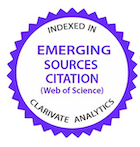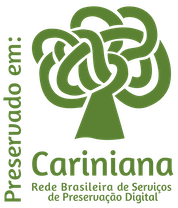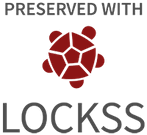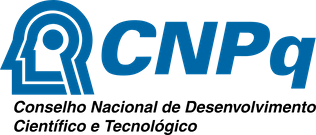Marcadores externos para estimativa de consumo por vacas leiteiras em confinamento
DOI:
https://doi.org/10.1590/1809-6891v25e-77289EResumo
A determinação acurada do consumo individual é um dos parâmetros importantes para avaliação do valor nutritivo dos alimentos e permite o fornecimento adequado de alimentos, conforme as exigências nutricionais de cada animal. Quando há impossibilidade da realização por meio do método direto, coleta de todas as fezes produzidas pelo animal, o consumo poderá ser estimado a partir da produção fecal estimada por indicadores e da digestibilidade in vitro da dieta. Foi objetivo deste estudo avaliar os indicadores externos dióxido de titânio (TiO2) e hidroxifenilpropano enriquecido e modificado (LIPE®) nas estimativas de consumo de matéria seca (MS). Foram utilizadas quatro vacas multíparas Holandês x Gir com média de 60 dias em lactação e 488 kg de peso corporal. Os animais foram alojados em estábulo tipo free stall e alimentados com dietas à base de silagem de cana-de-açúcar suplementada com concentrado composto de milho moído, farelo de algodão e 0%, 5%, 10% e 15% de caroço de algodão (base da MS). Adotou-se delineamento quadrado latino 4 x 4. O consumo foi determinado pela razão entre a produção fecal estimada pelos indicadores e o inverso da digestibilidade in vitro da MS, sendo as fezes coletadas diretamente na ampola retal, duas vezes por dia, por um período de sete dias. Não houve diferença (P>0,05) nos consumos estimados pelos indicadores TiO2 e LIPE® (10,3 vs 12,1; 11,1 vs 12,5; 10,2 vs 12,9; e 12,7 vs 10,9 kg/vaca/dia de MS em relação ao consumo mensurado, para as dietas com 0%, 5%, 10% e 15% de inclusão do caroço de algodão, respectivamente). Os indicadores externos LIPE® e TiO2 mostraram-se adequados para estimar a produção fecal e o consumo das vacas, independente da dieta oferecida, ambos mostraram que podem ser indicadores externos substituto do óxido crômico, pois, as estimativas de consumo fornecidas por eles não diferiram (P>0,05) do consumo observado no cocho.
Downloads
Referências
Velásquez AV, Oliveira CA, Martins CMMR, Balieiro JCC, Silva LFP, Fukushima RS, Sousa DO. Diet, marker and fecal sampling method interactions with internal and external marker pairs when estimating dry matter intake in beef cattle. Livestock Science. 2021;253:e104730. DOI: https://doi.org/10.1016/j.livsci.2021.104730
Maciel FA, Dias KDG, Gasparotto PHG, Dantas Filho JV, Cavali J. Produção de leite de vacas da raça girolando alimentadas com dietas com e sem caroço de algodão (Gossypium hirsutum L). Tekhne e Logos. 2020; 11(3):63-74.
Costa DR, Ribeiro KG, Cruz GFL, Silva TC, Cardoso LL, Pereira OG. Silagens mistas de cana-de-açúcar e amendoim forrageiro tratadas com Lactobacillus buchneri. Ciência Animal Brasileira. 2022;23:e72352P. DOI: https://doi.org/10.1590/1809-6891v23e72352P
Peres, MTP, Batista R, Twardowski TS, Ribeiro Filho HMN, Monteiro ALG. Titanium dioxide (TiO2) as a marker to estimate fecal output in sheep. Ciência Rural. 2019;49(12):e20190190. DOI: https://doi.org/doi:10.1590/0103-8478cr20190190
Titgemeyer EC, Armendariz CK, Bindel DJ, Greenwood RH, Lӧest CA. Evaluation of titanium dioxide as a digestibility marker for cattle. Journal of Animal Science. 2001;79(4):1059-1063. DOI: https://doi.org/10.2527/2001.7941059x
Saliba EOS, Faria EP, Rodriguez NM, Moreira GR, Sampaio IBM, Saliba JS, Gonçalves LC, Borges I, Borges ALCC. Use of infrared spectroscopy to estimate fecal output with marker Lipe®. International Journal of Food Science, Nutrition and Dietetics. 2015;S4(001):1-10. DOI: https://doi.org/10.19070/2326-3350-si04001
ASSOCIATION OF OFFICIAL ANALYTICAL CHEMISTIS - AOAC. Official methods of analysis. 19th ed. Gaithersburg: AOAC International; 2012.
Tilley JMA, Terry RA. A two-stage technique for the in vitro digestion of forage crops. Grass and Forage Science. 1963;18(2):104–111. DOI: https://doi.org/10.1111/j.1365-2494.1963.tb00335.x
Detmann E, Souza MA, Valadares Filho SC, Queiroz AC, Berchielli TT, Saliba EOS, Cabral LS, Pina DS, Ladeira MM, Azevedo JAG. Métodos para análise de alimentos. Visconde do Rio Branco, MG: Suprema; 2012. 214p.
Prigge EC, Varga GA, Vicini J L, Reid RL. Comparison of ytterbium chloride and chromium sesquioxide as fecal indicators. Journal of Animal Science. 1981;53(6):1629-1633. DOI: https://doi.org/10.2527/jas1982.5361629x
Lima RF, Pantoja DS, Almeida BF, Silva ACT, Cunha AR. Avaliação de indicadores externos de produção fecal em bubalinos confinados. Agroecossistemas. 2020;12(1):201-211, 2020. DOI: http://dx.doi.org/10.18542/ragros.v12i1.9012
Figueiredo MRP, Saliba EOS, Barbosa GSSC, Silva FA, Nunes AN, Silva CRM, Moreira GR. Indicadores na estimativa da digestibilidade aparente em dietas com inclusão de coproduto do cacau. Semina: Ciências Agrárias. 2019;40(6):2771-2782. DOI: https://doi.org/10.5433/1679-0359.2019v40n6p2771
Magalhães ALR, Teodoro AL, Souza MFS, Nascimento Júnior JRS, Sousa DR, Santos KC, Andrade AP, Pinto CS, Barbos, IFT, Silva SMC. Dietas para ovinos contendo capim elefante maduro e raspa de mandioca: estimativa de digestibilidade aparente por meio de indicadores. Archivos de Zootecnia. 2018;67(258):244-252. DOI: https://doi.org/10.21071/az.v67i258.3660
Myers WD, Ludden PA, Nayigihugu V, Hess BW. Excretion patterns of titanium dioxide and chromic oxide in duodenal digesta and feces of ewes. Small Ruminant Research. 2006;63(1-2):135-141, 2006. DOI: https://doi.org/10.1016/j.smallrumres.2005.02.010
Hotzel MJ, Teixeira DL, Machado Filho LCP. A hierarquia social e o regime de oferta influenciam o consumo de água em bovinos leiteiros. Revista Brasileira de Agroecologia. 2013;8(1):84-91.
Garcez BS, Alves AA, Araújo DLC, Oliveira ME, Pompeu RCFF, Rogério MCP, Moreira AL, Lima ISS. Performance and grazing behavior of growing goats supplemented with palm tree fruit. Revista Brasileira de Zootecnia. 2019; 48:e20180159. DOI: https://doi.org/10.1590/rbz4820180159
Saliba EOS, Silva FA, Silva CRM, Rodriguez NM, Barbosa GSSC, Borges ALCC, Borges I, Gonçalves LC, Saliba JS. Utilization of markers Lipe and TiO2 compared to total collection of feces on determination of digestibility and fecal output in bovines. Proceedings of the Australian Society of Animal Production. 2014;30(s/n):75.
Moreira Filho MA, Alves AA, Garcez BS, Moreira AL, Azevêdo DMMR, Parente HN. Digestibility markers of sheep diets containing hydrolyzed sugarcane-top hay. Revista Brasileira de Saúde e Produção Animal. 2017;18(1):38-49. DOI: https://doi.org/10.1590/s1519-99402017000100005
Figueiredo MRP, Saliba EOS, Barbosa GSC, Colodo JCN, Almança RA, Moreira GR. Digestibility of diets with passion fruit by-product estimated through external and internal markers in dairy heifers. Acta Scientiarum. Animal Sciences, 2021;43:e50241. DOI: https://doi.org/10.4025/actascianimsci.v43i1.50241
Silva JJ, Saliba EOS, Borges I, Gonçalves LC, Rodriguez NM, Aroeira LJM, Silva AGM, Costa FJN. Indicadores para estimativa de consumo total por novilhas holandês x zebu mantidas em confinamento. Revista Brasileira de Saúde e Produção Animal. 2010;11(3):838-848.
Silva S, JC, Correa L, GA, Mayorga, M, OL, Duran, C, EN, Portilla P, D, Diaz T, FA, Granja-Salcedo YT, Valencia E, DM. Effect of marker dosage frequency and spot fecal sampling frequency in the prediction accuracy of fecal output using chromic oxide and titanium dioxide in grazing BON steers. Tropical Animal Health and Production. 2021;53(5):e448. DOI: https://doi.org/10.1007/s11250-021-02902-0
Santos SA, Valadares Filho SC, Detmann E, Valadares RFD, Ruas JRM, Amaral PM. Different forage sources for F1 Holstein × Gir dairy cows. Livestock Science. 2011;142(1-3):48-58. DOI: https://doi.org/10.1016/j.livsci.2011.06.017
Downloads
Publicado
Como Citar
Edição
Seção
Licença
Copyright (c) 2024 Ciência Animal Brasileira / Brazilian Animal Science

Este trabalho está licenciado sob uma licença Creative Commons Attribution 4.0 International License.
Autores que publicam nesta revista concordam com os seguintes termos:
- Autores mantém os direitos autorais e concedem à revista o direito de primeira publicação, com o trabalho simultaneamente licenciado sob a Licença Creative Commons Attribution que permite o compartilhamento do trabalho com reconhecimento da autoria e publicação inicial nesta revista.
- Autores têm autorização para assumir contratos adicionais separadamente, para distribuição não-exclusiva da versão do trabalho publicada nesta revista (ex.: publicar em repositório institucional ou como capítulo de livro), com reconhecimento de autoria e publicação inicial nesta revista.
- Autores têm permissão e são estimulados a publicar e distribuir seu trabalho online (ex.: em repositórios institucionais ou na sua página pessoal) a qualquer ponto antes ou durante o processo editorial, já que isso pode gerar alterações produtivas, bem como aumentar o impacto e a citação do trabalho publicado (Veja O Efeito do Acesso Livre).






























